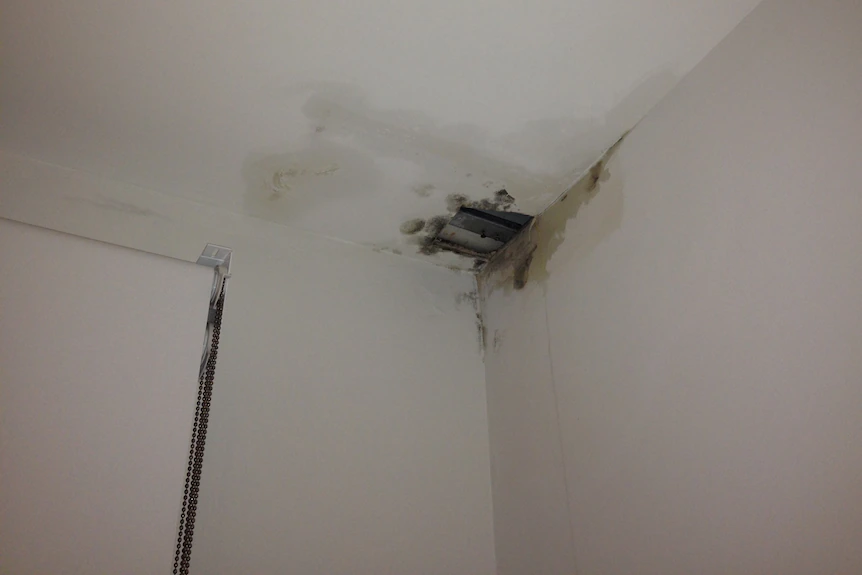This article originally appeared on Financial Review
The failure of state and territory governments to better regulate apartment development more than five years after a major report laid out necessary reforms means up to half of all new units built could have “serious” defects, construction lawyer Bronwyn Weir says.
Apart from NSW, where new legislation gave Building Commissioner David Chandler powers to halt completion of substandard projects, states and territories had done little to implement recommendations of the 2018 Building Confidence report she co-authored, Ms Weir said.
The failure of jurisdictions to fully take on the 24 recommendations that included nationally consistent regulation of builders, measures to improve integrity of private surveyors and stronger audit powers and enforcement of building work put consumers at risk in the next apartment boom, she said.
“On current estimates, 50 per cent of what will be built will have serious defects,” Ms Weir told The Australian Financial Review.
To tighten up standards and prevent a repeat of development failures such as those seen at Sydney’s Opal Tower – a 392-unit tower from which residents were evacuated on Christmas Eve 2018 – and Mascot Towers in the city’s south, states needed to both strengthen regulations and enforce them by calling out bad actors when they had to, she said.
NSW led all other states and territories on this score, Ms Weir said.
“What they’ve been able to do in four years is pretty remarkable – a massive disruption.”
Australia’s chronically undersupplied housing market is heading for another development boom and apartments will lead the way. The Housing Industry Association predicts detached house starts to trough in 2024, but says multi-unit dwelling starts, which include apartments, hit their cyclical low in 2022 and are already recovering.
High borrowing and materials costs mean the boom is unlikely to kick off before 2025, but without better safeguards in place for the buyers of those apartments, the next wave will build defects and rectification costs into those purchases that should be avoidable.
“We need to deliver tangible reform on a nationally consistent basis now so in 2025 when we start putting apartment buildings in the ground and consumers are entering them, we ensure those consumers and investors have the confidence in the long-term quality of their purchase,” said Corey Nugent, chief executive of Resilience Insurance, which in 2022 started offering cover for defects in apartment buildings.
Part of the hurdle to reform is cost. Reforms to build better-quality apartments that will be more sustainable to operate in the longer term will add more costs upfront, adding to those that have already soared in recent years.
“It’s going to cost more but we’re not going to end up with buildings with defects that saddle owners for decades with cost and stress,” Ms Weir said.
Progress in the different states was varied. Just before Christmas, Western Australia published a detailed document, with costings, of reform steps it would take. This was a big step that went further than some other states, Ms Weir said.
If progress in implementing reform was not uniform, it could push lower-quality developers into the states with weaker rules, she said. “You could argue NSW is less attractive because there is more upfront cost. But that means defects are going to go up in other jurisdictions.”
Federal Involvement
That is not the only risk. Costs such as insurance premiums will also be higher in those weaker jurisdictions for developers and consumers.
Mr Nugent said demand for defects liability insurance, which covers problems such as waterproofing and structural faults for the first 10 years after completion, was coming from all over the country. Resilience was writing policies nationally, but coverage was cheapest in NSW, where the regulatory environment was strongest.
“In NSW, where they have a more advanced reform program and quality and delivery, premiums range, with all inclusions, at about 1.3-1.4 per cent of construction cost, whereas in other states, that range may be closer to 1.6-1.7 per cent,” Mr Nugent said.
“If you’re talking half a percentage point of a $150 million, $200 million development, you can be changing the price in that space by hundreds of thousands of dollars.”
Building regulation lies with individual states and territories, but the federal government, which played an early key role in co-ordinating reform moves and had stepped away, should come back into the conversation, especially as it was pushing ambitious new home-building targets, Mr Nugent said.
“We have a unique opportunity right now for the federal government, through the building ministers’ meeting, to put the states at the table to identify how we’re going to facilitate the bold building program but assure – to the level of the Building Confidence Report – delivery of quality assets,” he said.
The original report Ms Weir wrote with former bureaucrat Peter Shergold recommended annual updates on how jurisdictions were improving, but there had been nothing since 2019, a recent Australian Construction Industry Forum assessment found.
“Since that date there has been no comprehensive report on progress, partly due to the pandemic but also to changes in priorities for each government,” the ACIF report said.
“It is clear that there are still many problems within the industry, with skills and materials shortages still an issue since the pandemic and national priorities such as solving the current housing shortage likely to exacerbate those problems.”
If governments did not get the reforms done, it would eventually come back and hit them, Mr Nugent said.
“The end consumer cost, as we have seen often, goes to the government,” he said.
“We’ve seen this with Mascot Towers, with Opal Tower, consumers and governments being financially burdened with significant avoidable cost. There are many other buildings around the country where that is and will be mirrored again. The burden will come back to governments at the end of the day, while too often financially crippling many consumers.”



